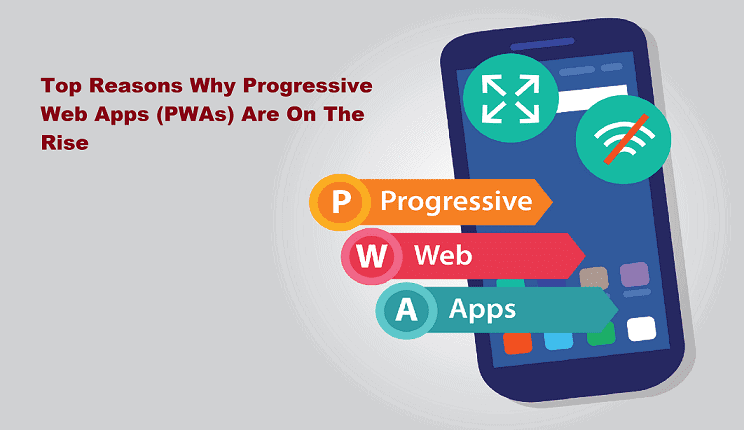As technology progresses, the users’ expectation from a website increases. To keep the users or customers glued towards your website, you need to adapt to the advancements. So, you can offer them an immersive experience, and they will love returning to your website.
A year ago, it may seem impossible that any technology could replace native apps. However, it’s now pretty clear that Progressive Web Apps are here to stay, and will dominate the tech world.
If you’re not aware of the PWA, then let’s skim through with its basics first.
What is a Progressive Web App?
PWA is a website that offers similar functionality and ease of use like a normal app. It walks and talks like an app, but operates within the web browser instead of the mobile phones. The best part is that it occupies less space of your devices while offering the same functions of an app.
If you want your website to qualify as a PWA, it should:
- Load instantly
- Work offline
- Look native to the device (from it is viewed)
Features of PWA
PWA is packed with some incredible features that make it a worthy investment. Just have a glimpse:
- Reliability- Its loading time is super-fast, regardless of whether the user is offline or online.
- Connectivity Independence- It is designed to work on both offline and low-quality networks.
- Self-updates- It updates automatically, and apps stay fresh.
- Push Notifications- These are perfect for keeping the customers interested, and motivating them to use your app.
- Installable- It can be saved on the home screen without any need to download an app.
- App-Like- Its app-shell model helps to mimic navigation and interactions of the native apps.
Overall, you don’t have to build a separate mobile of the project.
What’s the customer’s reaction on PWA?
A lot of brands have already started testing PWA within their user base. Take an example of Twitter, it is admired for its PWA. Many people follow it to keep a track on the current events and political news.
Those who don’t have their account can still see various tweets and trends without downloading and signing up with an app. They can easily read tweets within their web browsers. This helps in increasing Twitter’s traffic. If it safeguards the content behind the native app firewall, then there would be a drop in the online traffic.
PWA is the Future of Web
There are ample reasons, which justify this statement. Let’s take a look:
Seamless Access
Unlike native mobile apps, you don’t have to install or download PWAs. For instance, if you want to shop from a popular eCommerce store online, you need to go through various stages.
Firstly, you have to explore it in the marketplace, download it, and finally, seeking permission for using your contact info. While in the case of PWAs, the users can simply search your website on Google and instantly access PWA without the need to download.
It facilitates the users to use it anytime without paying extra for the data charges for downloading. Moreover, they don’t have to uninstall the app to create more space on mobile.
Access Content Offline
It may sound astonishing to many of you, but PWA actually works offline. The service workers, a core of the PWA technique used for resource caching and push notifications works in the background. It performs even at the time when website is not accessed.
Higher User Engagement
You may have noticed that many websites come with a dialog box (Allow and Deny button). Choosing allow button will make you receive updates from the websites when you are away. Google Chrome app introduced the same thing, which says, “Add to Home Screen”. With this, you can add the website to your home screen in a single click.
Similarly, the link-adding feature in PWA allows the app to be cached, and the app access will be given directly from the home screen.
Native App Flexibility
Using PWA in your web browser renders the similar experience as that of the native apps. The app shell acts just like an app and imitates any gesture you might see in native apps. It perfectly handles the online ordering, loyalty programs, and customer information.
The web users will be given the option to bookmark your PWA to their home screen. This will make them to instantly access your website whenever they want.
In Conclusion
Without an ounce of doubt, the PWA is the future of web development. In the future, the majority of the business owners will own a Progressive Web App. The developers are actively searching for the best ways to make the most out of the opportunities related to PWAs.
Author Bio
The author of this blog is a proficient PWA developer working at Sparx IT solutions for many years. With this write-ups, he helps the budding web developers and business owners about the latest innovations in the field of an app world.








